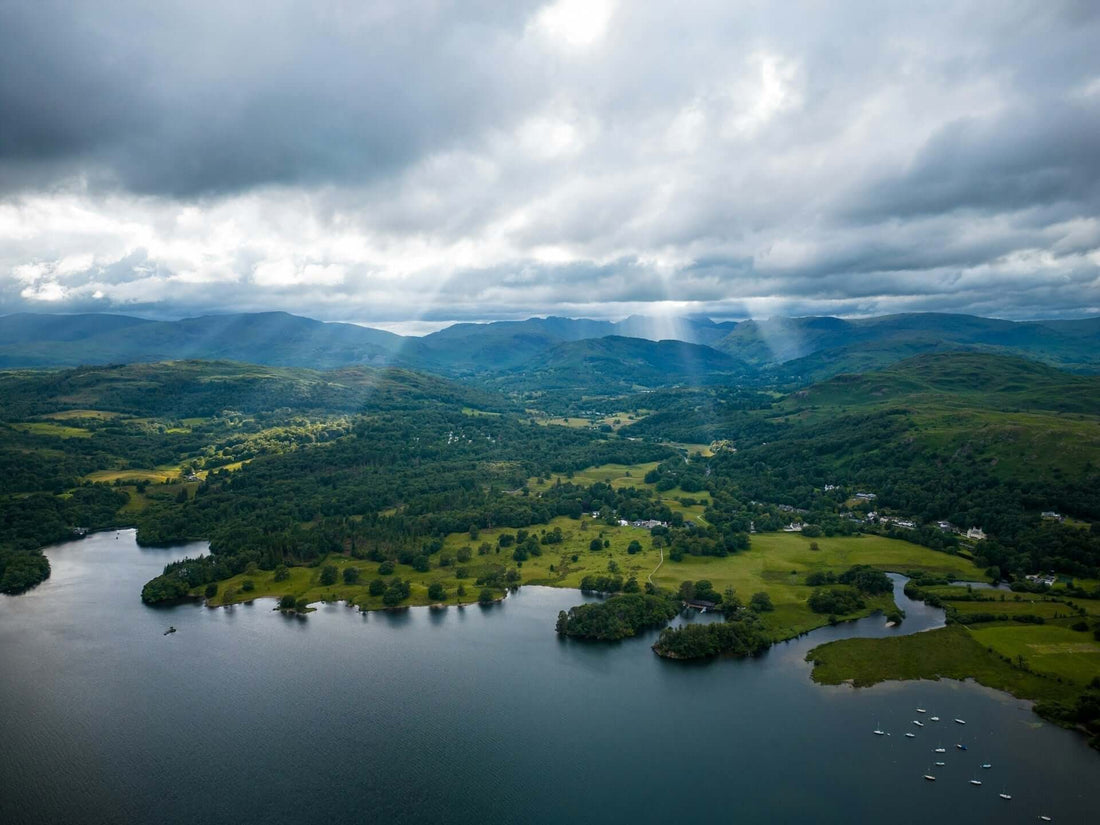
Can You Wild Swim in Windermere?
Share
Yes, you can wild swim in Windermere! As England’s longest natural lake, stretching approximately 10.5 miles (17km) in length, Windermere is one of the most popular spots for open water swimming in the Lake District. Its breathtaking scenery, vast open water, and multiple access points make it an ideal destination for both experienced swimmers and those looking to take their first dip.
However, as with any wild swimming location, there are key factors to consider before heading into the water. From water temperature and safety precautions to wildlife encounters and water quality, this guide will ensure you have all the essential information for a safe and enjoyable swim.
What wildlife might I encounter while swimming in Windermere
One of the great joys of wild swimming is the opportunity to connect with nature. Windermere is home to a diverse range of wildlife, from fish swimming beneath the surface to birds soaring overhead.
Aquatic Life
- Fish: Windermere is known for its Arctic char, a rare species that survived since the Ice Age. You may also encounter brown trout, perch, pike, and Atlantic salmon.
- Aquatic Plants: The lake supports several plant species, including white water lilies and six-stamened waterwort, which thrive in shallower areas.
Birdlife
Windermere is a haven for birdwatchers, with many species frequenting the lake throughout the year:
- Waterbirds: Look out for mute swans, mallards, tufted ducks, goldeneye ducks, and great crested grebes.
- Shorebirds: Kingfishers can sometimes be seen darting across the water, while grey herons and Canada geesepatrol the lake’s edges.
Mammals
- Otters: Although rare, otters are occasionally spotted in Windermere, swimming gracefully in search of fish.
- Red Squirrels: In the surrounding woodlands, you may glimpse the elusive and endangered red squirrel, a protected species in the UK.
Whether you're swimming or exploring the shoreline, it’s important to respect local wildlife. Avoid disturbing birds, plants, or animals, and leave no trace of your visit.
How does the water temperature in Windermere vary throughout the year.
The temperature of Windermere's water varies throughout the year, depending on the season and weather conditions. Knowing what to expect can help you prepare appropriately for your swim.
Winter (December - February) – Coldest Months
- Temperature Range: 4.6°C – 5.2°C
- Conditions: The lake is at its coldest, often dropping below 5°C. This is not recommended for inexperienced swimmers, as cold water shock can be dangerous.
- Best For: Experienced cold-water swimmers with proper wetsuits, neoprene gloves, and boots.
Spring (March - May) – Gradual Warm-Up
- March: 5.7°C
- April: 7.4°C
- May: 10.5°C
- Conditions: The water slowly begins to warm up, though it remains quite cold. Many swimmers begin venturing in from late April onwards.
Summer (June - August) – Peak Swimming Season
- June: 13.4°C
- July: 15°C
- August: 15.3°C
- Conditions: The warmest time for swimming, though the water rarely exceeds 20°C, even in the height of summer. Wetsuits may not be necessary during this period.
Autumn (September - November) – Cooling Down
- September: 13.3°C
- October: 10.2°C
- November: 7.3°C
- Conditions: The water starts to cool significantly, requiring swimmers to adjust their gear accordingly.
Windermere’s year-round average temperature is approximately 11°C, making it cold compared to heated pools. If you’re not accustomed to wild swimming, gradual acclimatisation is key to avoiding cold water shock.

What safety precautions should I take when wild swimming in Windermere
Before You Swim
Check Water Quality & Algae Reports
Windermere sometimes experiences blue-green algae blooms, especially in summer. These can be toxic, causing skin irritation and illness.
Always check for current water quality updates before swimming.
Research the Location
- Safe entry points include Waterhead and other designated swimming areas.
- Be aware of potential hazards like submerged rocks, weeds, or sudden drop-offs.
Monitor Weather Conditions
- The Lake District weather can change rapidly. Avoid swimming in strong winds or after heavy rain, as these can create hazardous conditions.
Inform Someone of Your Plans
- Always tell someone where you're swimming and when you expect to return.
- Consider using RYA SafeTrax or a similar tracking app for added security.
What safety precautions should I take when wild swimming in Windermere
During Your Swim
Swim with a Buddy
Never swim alone! Swimming with a partner increases safety and provides assistance in case of an emergency.
Wear a Bright Swim Cap & Tow Float
- Windermere has significant boat traffic, particularly on the east side.
- Bright colours and a tow float help make you more visible to boats and fellow swimmers.
Stay Close to the Shore
- The west bank is recommended for beginners, as it remains shallow for a longer distance.
- Avoid the busier east side, where ferries, motorboats, and paddleboarders are more common.
Acclimatise Gradually
- Enter the water slowly to avoid cold water shock, which can cause rapid breathing and panic.
- Start with short swims and gradually build your tolerance to colder temperatures.
Be Aware of Boats
Windermere is a busy lake, so always scan for approaching vessels before heading into open water.After Your Swim
Warm Up Quickly
- Pack warm clothing, a towel, and a hot drink to help your body recover from the cold water.
- Dry off and change into layers as soon as possible.
Avoid Overexertion
- Know your limits! Fatigue and cramps are common risks, especially in colder water.
- If you feel tired, exit the water immediately rather than pushing on.
Rinse Off
- If you've swum in an area with blue-green algae warnings, shower as soon as possible to prevent skin irritation.
Final Thoughts
Wild swimming in Windermere offers an unforgettable experience, with its stunning landscapes, rich wildlife, and refreshing waters. Whether you prefer early morning solitude or a summer afternoon dip, careful planning will ensure a safe and enjoyable swim.
✅ Top Tips for Windermere Wild Swimming:
✔ Check water quality reports and algae warnings
✔ Wear a bright swim cap and tow float for safety
✔ Choose early mornings for calmest conditions
✔ Stick to the west bank to avoid heavy boat traffic
✔ Acclimatise gradually to avoid cold water shock
Would you like recommendations on other great wild swimming locations in the Lake District? Let us know in the comments! 🏊♂️
For Wild Swimmers Large Jumbo Swim Wild Oversized Canvas Tote Bag. Sea Swimming Tote Canvas Bag: Shop Now!


